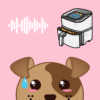Axolotls are amazing creatures and make excellent pets, but they can be a little tricky to care for. One common problem that axolotl owners encounter is their axolotl floating at the surface of the water, and one most common reason for this is bloatedness. Bloatedness in axolotls is often caused by overfeeding or feeding them the wrong types of food.

There are other reasons why your axolotl may be floating that are not related to bloatedness. In this blog post, we will discuss the causes of floating and what you can do to correct it.
Is It Normal for My Axolotl to Float?
It is not normal for your axolotl to float and is usually a sign that something is wrong. If your axolotl is floating and you are not sure why the best thing to do is take them to the vet.
Axolotls are bottom dwellers, meaning they spend most of their time on or near the bottom of their tank. If you see your axolotl floating at the surface, it is a cause for concern, and you should check to see if there are any other signs that something is wrong.
Some other signs that something may be wrong with your axolotl include:
- not eating
- lethargic
- hiding more than usual
- skin lesions
- mucus coming from their nose or mouth
- difficulty swimming
If you notice any of these signs in addition to your axolotl floating, it is best to take them to the vet right away.
Do Axolotls Need Air?
Is My Axolotl Dead?
An axolotl floating at the water’s surface is not necessarily dead, but it is a sign that something is wrong.
If your axolotl dies, it usually happens very suddenly, and you will notice that their body is limp and there is no movement. They don’t usually float immediately, but if you see your axolotl floating and there are no other signs of life, they are likely dead.
Reasons Why Axolotls Float
As mentioned above, the most common reason why axolotls float is that they are bloated. Bloatedness is caused by overfeeding or feeding them the wrong types of food.
Other reasons for floating include:
Excess Ammonia in the Water
Ammonia is a poisonous gas that is produced when axolotl waste breaks down. If there is too much ammonia in the water, it can cause your axolotl to float. Axolotls can ingest ammonia through the water in their tanks, so it is essential to ensure that the water in their tanks is clean and free of ammonia.
Impacted Digestive System
If your axolotl has an impacted digestive system, it may float to the water’s surface. An impacted digestive system is caused by eating something they cannot digest, such as gravel or sand. If you think your axolotl has an impacted digestive system, you should take it to a vet.
Overfed or Bloatedness
If you think your axolotl is bloated, the first thing you should do is find out what is causing the bloatedness. You should feed just enough food to your axolotl so that their stomach is not bloated.
Axolotls can also swallow air bubbles when they surface to breathe, which can cause them to float. If you think this is the case, you may consider installing bubblers in their tank to help them with their breathing.
Water Temperature
If the water in your axolotl’s tank is too cold, it may float to the surface to warm up. The ideal water temperature for axolotls is between 60-and 70 degrees Fahrenheit.
Baby axolotls are more likely to float than adult axolotls because they have not yet developed the ability to regulate their buoyancy.
Will UV Light Hurt Axolotls?
Why Is My Axolotl Floating Sideways?
You may need to check water parameters if your axolotl is floating sideways. This can be a sign of high ammonia levels or nitrites in the water. It can also be a sign that the water is too cold or too hot. A too extreme temperature can cause severe stress in axolotls, which manifests in different ways, including floating sideways.

Conclusion
Floating is a severe problem for axolotls, as it can often be the sign of an underlying issue or ailment. In most cases, this problem can be resolved by ensuring that your axolotl is getting enough to eat and by increasing their water temperature.
If your axolotl is still floating after trying these things, it is best to take them to the vet for a check-up. The vet will carefully examine the axolotl to determine the cause of their floating, and they will work with you to devise a solution.
Whether it’s encouraging more food intake or administering medication, they will do whatever they can to get your precious pet back on track. So if you notice that your axolotl has started floating, don’t wait – see your veterinarian right away! Their expert advice and guidance could make all the difference for your beloved axolotl.

Doctor of Veterinary Medicine (D.V.M.) at Nation Taiwan University,Master of Science (M.S.) in Biomedical Engineering at National Taiwan University of Science and Technology




